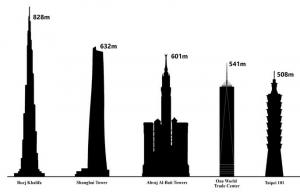Machu Picchu: its architecture and sacred meanings
Machu Picchu, which means 'Old Mountain' in Quechua, is the name that today is given to an ancient Inca city, located on the top of the homonymous mountain. This mountain houses a complex work of architecture and engineering. Although it is one of the most admired tourist destinations, the ruins of Machu Picchu continue to harbor mysteries that captivate researchers and the curious.
What makes this place such a portentous engineering monument? Why and why would the Incas build a city in such a high and remote place? How could they achieve such a thing without knowing the wheel or without having metal tools? Why didn't the Spanish talk about this city in their travel logs? And why didn't they destroy it, as they did with other pre-Columbian monuments?
The location: the sacred landscape

The construction of the city of Machu Picchu represented a huge engineering challenge as a result of its location. It is located on the top of the sacred mountain, which in ancient times required five days of travel.
However, the real problem was not the height, but that it was in the middle of two faults important seismic events, and, as if that were not enough, the high rainfall in the area generated landslides constant. Why, then, did the Inca emperor Pachacútec insist on locating the city there?
Let's analyze the reasons for the choice. From a practical point of view, the site had in its favor a spring of water and a granite deposit, which was quarried. But those weren't motivations enough.
Some researchers attribute this to the so-called sacred landscape theory. According to the testimonies of the Spanish, the Incas worshiped the Sun, the Water and the Mountains as authentic gods. In addition, they believed that the contemplation of the divine nature transferred certain gifts to them or, in any case, strengthened them.
Observe in this video the light effects on the site where Machu Picchu is located:
If the mountain was located in the center of a mountain complex that they worshiped and, furthermore, the sacred river Urubamba passed by his side, everything becomes, then, more understandable: Machu Picchu had a meaning sacred.
The terraces
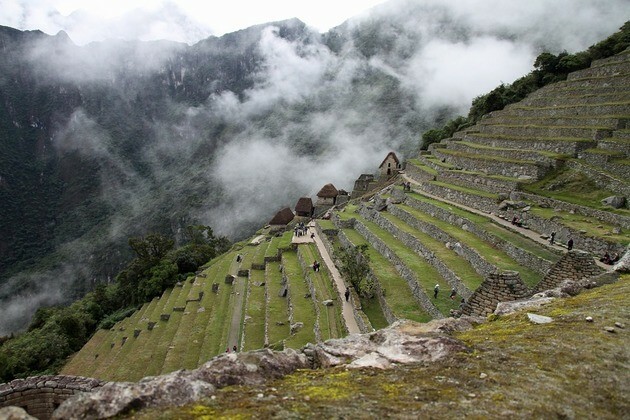
The city did not begin to be built from the top, as this would have ended in landslides. The first engineering challenge was to achieve a firm and stable support for the city and provide it with arable land, since it was very far from the countryside. The Inca engineers devised a system of terraces that fulfilled two functions: one structural and the other agricultural.
As you might expect, the first use was structural. The masons began by building a drainage system by means of terraces, whose function was distribute the water received by the rains to the ground, avoiding soil erosion superficial.
These terraces were built with a layer system organized as follows: at the base, a layer of large stones, on top of this, a layer of gravel, then a layer of sand, and finally a layer of mulch. This system allowed the absorption of rainwater and its control.
To support the construction, they began to build these terraces from the base of the mountain and progressively added steps to the top.
The terraces were also used as crop fields to facilitate agriculture on that steep mountain. Thus, small portions of land organized in terraces allowed the cultivation of corn, the main food of Machu Picchu.
Sources and pipes
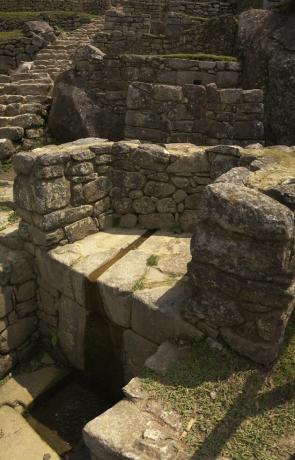
Once the structural base was resolved, the Inca engineers created a system of fountains and pipes. The sources were distributed throughout the city, fed by the natural spring of the mountain. The first fountain was located in the emperor's house to guarantee purity.
The canalization or sewerage system, which totals more than one hundred sewers, transported the water to a central plaza, below which it built a special terrace that had a layer of mulch, another of sand and one more of granite rocks that, surely, came from the remains of the quarries.
Architecture: temples, buildings and techniques
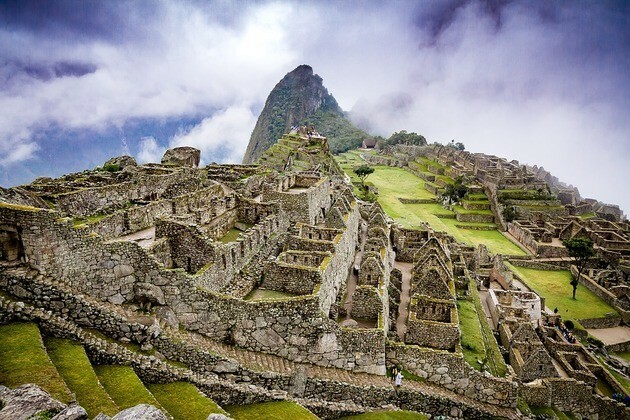
The Inca emperor Pachacútec, which means "the one who remakes the world", was the one who devised and ordered this marvel of engineering. However, on the intentions or uses of this place, there are still no conclusive information, but rather elaborate interpretations in light of the archaeological findings.
In the city of Machu Picchu there are at least 200 architectural structures made of square rock. However, there are no sculptures. This city was home to between 300 and 1,000 people. It is not a walled city, so its military use is ruled out. But certainly this city is a public manifestation of the emperor's power. That would be its first function: the commemoration of the triumph of the conqueror Pachacútec.
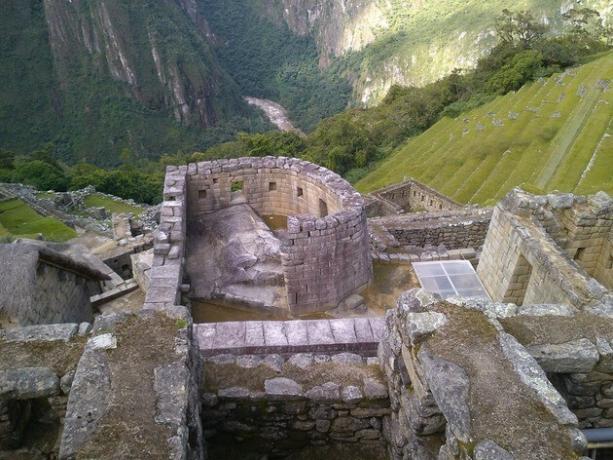
Thus, two possibilities remain, which do not contradict each other: the city had a religious function and, in turn, provided rest for the emperor and his visitors. These hypotheses arise from two tests: the presence of temples and the discovery of various skeletons.
From the study of the skeletons, it has been understood that in Machu Picchu the working class did not live as such, subjected to forced labor, but a class of servants who were in charge of the necessities real.
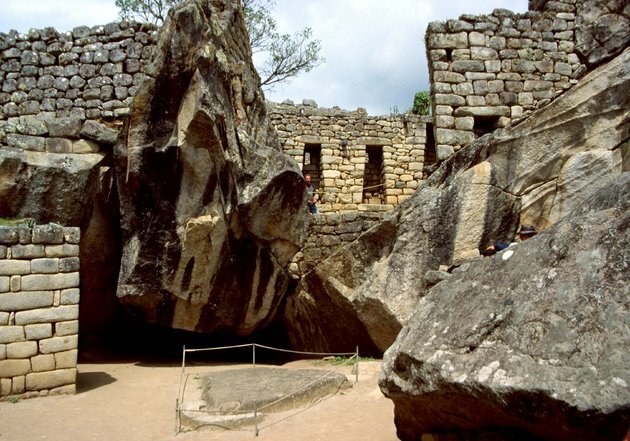
But it is to remember that, in addition, the emperor was worshiped as a true idol, Like a god. In fact, the Corpus Christi procession that is celebrated today in Cuzco is a Christianization of the Inca festival that carried the mummified body of the emperor. It is precisely for this reason that in Machu Picchu, corn was mainly cultivated, food reserved for the high spheres of power, an image of the divine.
Thus, in addition to the dwelling houses, in this Inca city there are the following buildings:
- The temple of the three windows.
- The temple of the Sun: rock that lights up on the solstice.
- The group of the condor, which receives its name from the carved floor and the stone wings.
- Pilar Intihuatana.
Inca masonry
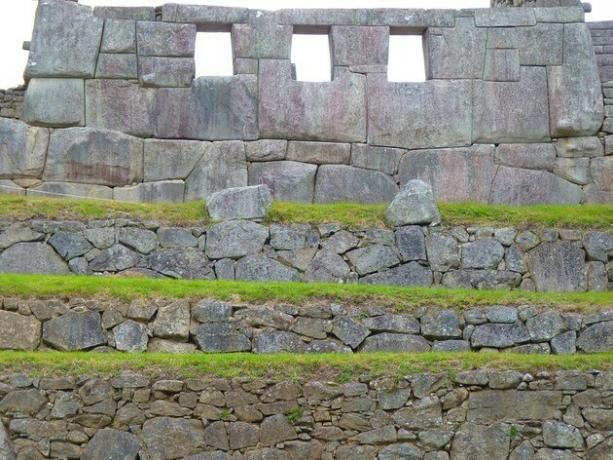
The use of terraces at the base is also visible.
All the buildings of Machu Picchu were built by means of a technique that still surprises engineers today. Inca masonry has the particularity of fully guaranteeing the stability of the construction without using any mortar.
The technique consisted of the following: first, from the quarry they formed a kind of neck in the block to facilitate a break. With large stone blocks they exerted a direct hammering on the area. Then they smoothed the surface with smaller blocks.
This done, they moved the rock by means of logs or on mud to the site. There, they would lift the rock into position, first on a wedge to square the angle. The wedge was removed with an accurate blow and, once the rock was in place, they modeled it on the spot to match the neighboring ones.
The intihuatana sacred pillar
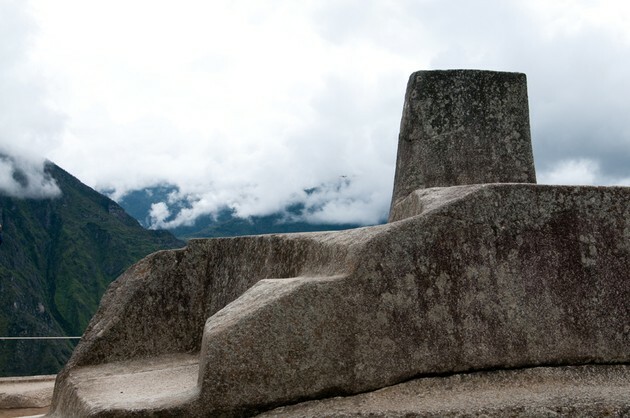
Of the monuments of Machu Picchu, one deserves particular attention: the sacred pillar Inti Huatana or Intihuatana, an expression that means 'where the sun is moored'.
It is believed that it could have been an astronomical calendar. This monolith is surprising in several aspects: it is located at the highest point, in the center of the city and in the center of the global landscape. It is aligned with the four cardinal points and the four mountain gods, that is, the four peaks of the region.
In addition to this pillar, the city is surrounded by other carved pillars, props that demarcate the city limits and were also conceived as sacred icons.
Brief history of the Incas in Machu Picchu

The Inca empire was consolidated in the middle of the 15th century AD. of C., specifically towards 1440. It was a consequence of the conquests of Pachacútec, known as the first Inca of Tahuantisuyo, on the Picchu ravine. The area had previously been occupied by other cultures from Cuzco, specifically Vilcabamba and the Sacred Valley.
During his rule in Cuzco, Pachacútec ordered the construction of the city of Machu Picchu, which was completed in 50 years. At his death, the empire and, evidently, the city were in charge of Túpac Yupanqui and then Huayna Cápac.
But the Incas faced three blows around the sixteenth century that would change their history: the spread of the smallpox in the first place, the Inca civil war around the year 1531 and, finally, the Spanish invasion initiated in 1534.
Although there are no accounts of the city of Machu Picchu in the documentary sources of the Spaniards, it is knows that they had information about their existence, because the settlers who remained in the city paid tribute. However, it is possible that they did not visit.
As can be seen, the Inca empire did not last too long. Barely a hundred years of domination were possible, but in those 100 years this magnificent city was built, a marvel of engineering and a testimony to culture.


